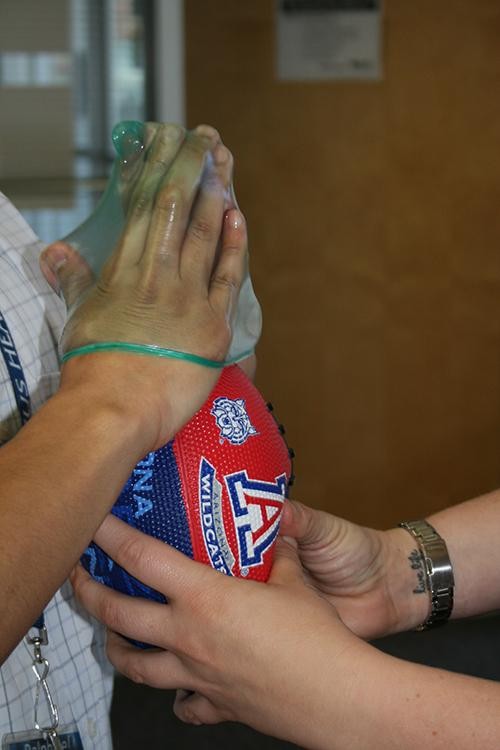An estimated 65 million people in the U.S. have a viral sexually transmitted disease or infection, according to the American Social Health Association.
By age 25, half of those people that are sexually active will come in contact with an STD or STI. UA students are encouraged to get tested as many may be unaware that symptoms and warnings of sexually transmitted diseases are not always present.
MTV, the Centers for Disease Control and Prevention, the Kaiser Family Foundation and Planned Parenthood will partner to host the “”Get Yourself Tested”” event for STD awareness month in April.
On average, about 65 percent of UA students say they are having vaginal intercourse, according to Lee Ann Hamilton, the assistant director of Health Promotion and Preventive Services at Campus Health Service. Most other students claim to be virgins, she said.
“”Some people think, ‘Oh, well as long as I’m a virgin I can’t get anything,'”” Hamilton said.
However, sexual intercourse isn’t the only cause for spreading diseases. Some diseases, such as herpes and genital warts, can be spread via skin-to-skin contact with another person or through oral sex.
Nearly 2,000 students at the UA get tested for sexually transmitted diseases each year, according to the annual Health & Wellness survey results, she said. The data is kept anonymous due to privacy concerns but is demographically representative.
There tends to be an increase in STDs at the UA after spring or fall breaks, Hamilton said, and more people get tested upon returning to classes from breaks.
At the UA, females report that they usually use a condom 58 percent of the time, while males use a condom 67 percent of the time. Next to abstinence, condoms are the best protection against disease, Hamilton said.
“”We’d like to see that be higher,”” she said. “”If you have a penis, or you’re having sex with a penis, put a condom on it every time, from start to finish.””
Hamilton recommends that knowing the recent test results of one’s sexual partner is crucial.
However, just because someone says their results are negative, it doesn’t make it true, she said.
Some people get tested together.
“”The time not to ask if somebody has a disease is when you’re both naked and you’re ready to do it,”” Hamilton said. “”It should be before then.””
Using a reliable method of birth control is also important for heterosexual relationships, according to Hamilton. However other common forms of birth control, such as contraceptive pills and the NuvaRing, do not offer protection against STDs because they are hormonal. Condoms are helpful for STD and pregnancy protection, Hamilton said.
“”Sometimes people get in the heat of emotion and don’t put on a condom,”” said Garrett Bright, a economics graduate student visiting the UA from the University of Utah.
While not all people prepare for safe sex, most are aware of the consequences, Bright said.
“”They try to wrap it before they tap it,”” he said.
The UA Women’s Resource Center offers a program called Sex Ed College Style, which seeks to educate students about safe sex. The most recent event was held last Thursday.
Not knowing one’s status can result in infecting other people, Hamilton said. Untreated infections can lead to infertility, disfiguring problems or worse.
“”With treatment, almost all STDs can be managed and the first step is getting tested,”” she said.









